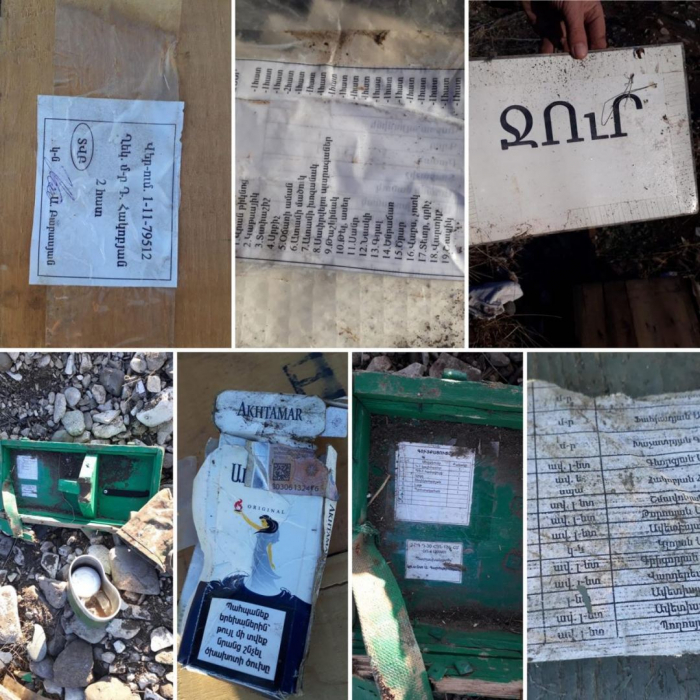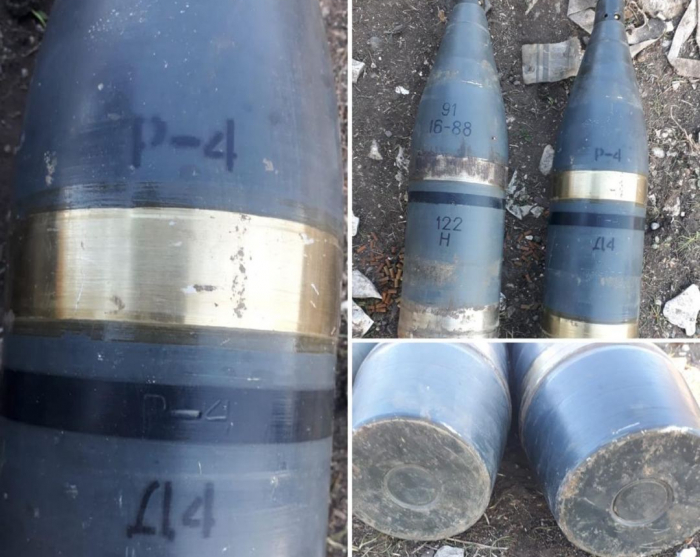The Azerbaijan National Agency for Mine Action (ANAMA) told AzVision.az that 122 mm D-4 white phosphorus (P-4) artillery shells were found on December 25 on the territory of a former Armenian military post in the liberated Sugovushan village, Azerbaijan’s Tartar district.
 Note, white phosphorus has a significant, incidental, incendiary effect that can cause severe damages to humans and civilian objects in the vicinity. Human Rights Watch say the infection from white phosphorus is common and the body’s absorption of the chemical can cause serious damage to internal organs, as well as death. It could lead to destructive effects on the environment and may remain within the deep soil for several years without any changes.
Note, white phosphorus has a significant, incidental, incendiary effect that can cause severe damages to humans and civilian objects in the vicinity. Human Rights Watch say the infection from white phosphorus is common and the body’s absorption of the chemical can cause serious damage to internal organs, as well as death. It could lead to destructive effects on the environment and may remain within the deep soil for several years without any changes.
The international law outlines white phosphorus as an incendiary weapon, defined by Protocol III of the Convention on the Prohibition of Use of Certain Conventional Weapons as “any weapon or munition which is primarily designed to set fire to objects or to cause burn injury to persons through the action of flame, heat or combination thereof, produced by a chemical reaction of a substance delivered on the target.” The protocol prohibits using air-delivered incendiary weapons against military targets located among civilians, and limits the use of incendiary weapons delivered by other means.
More about: ANAMA Sugovushan
















































